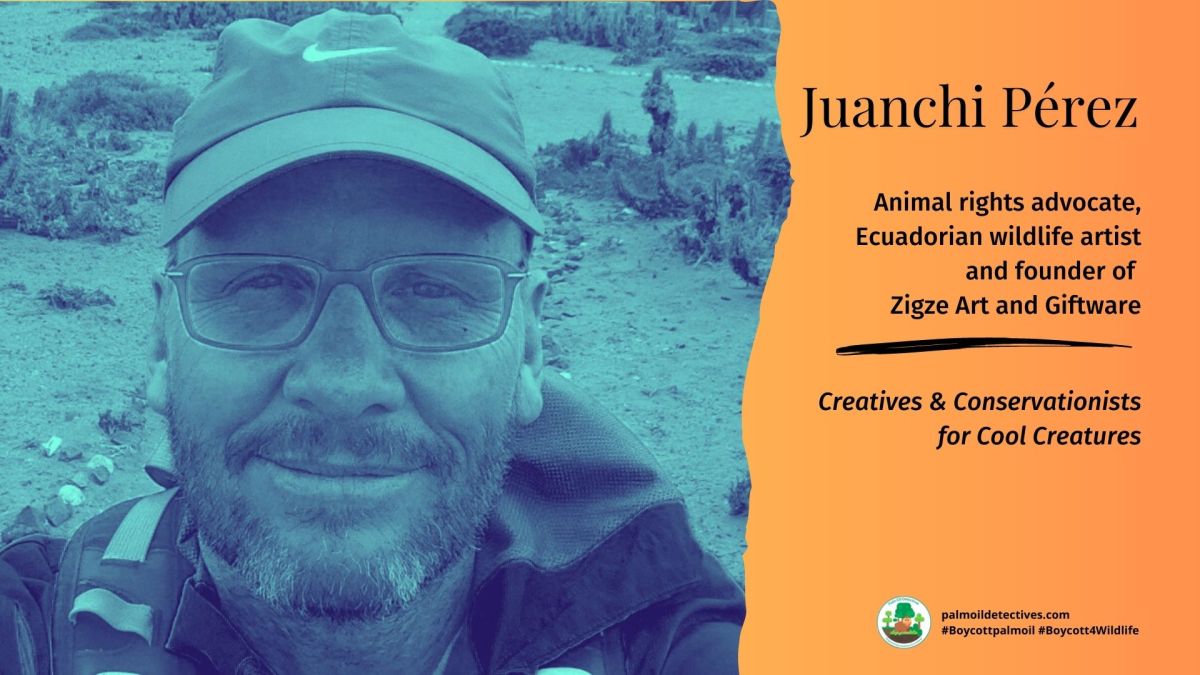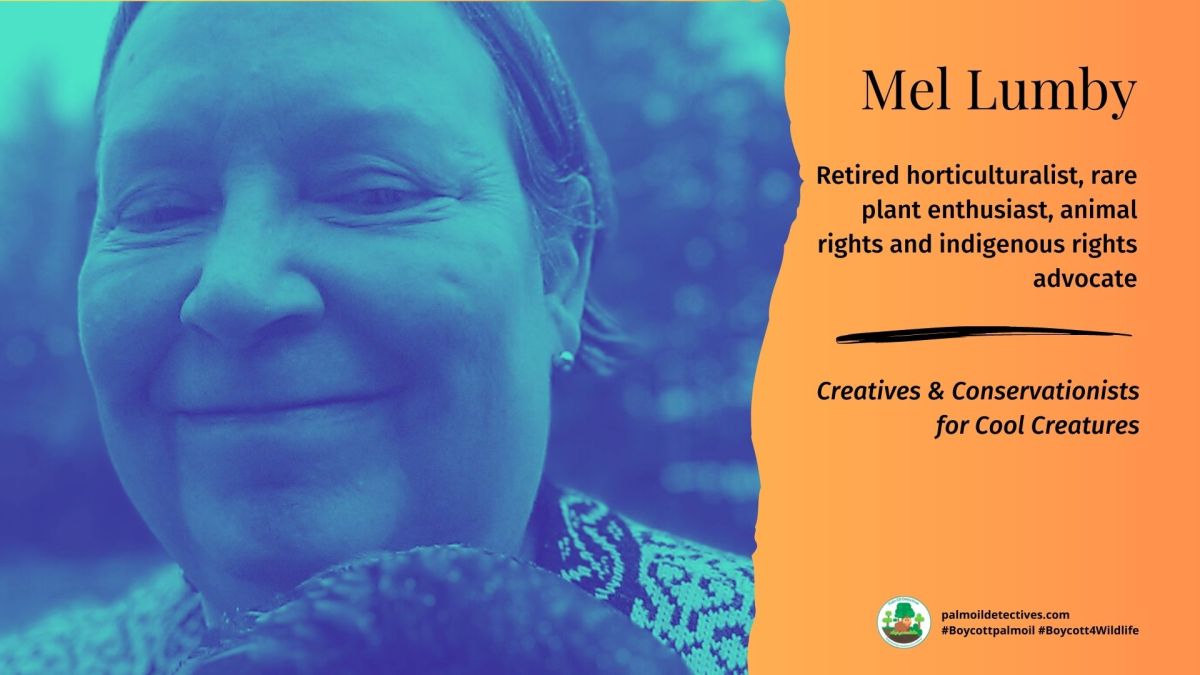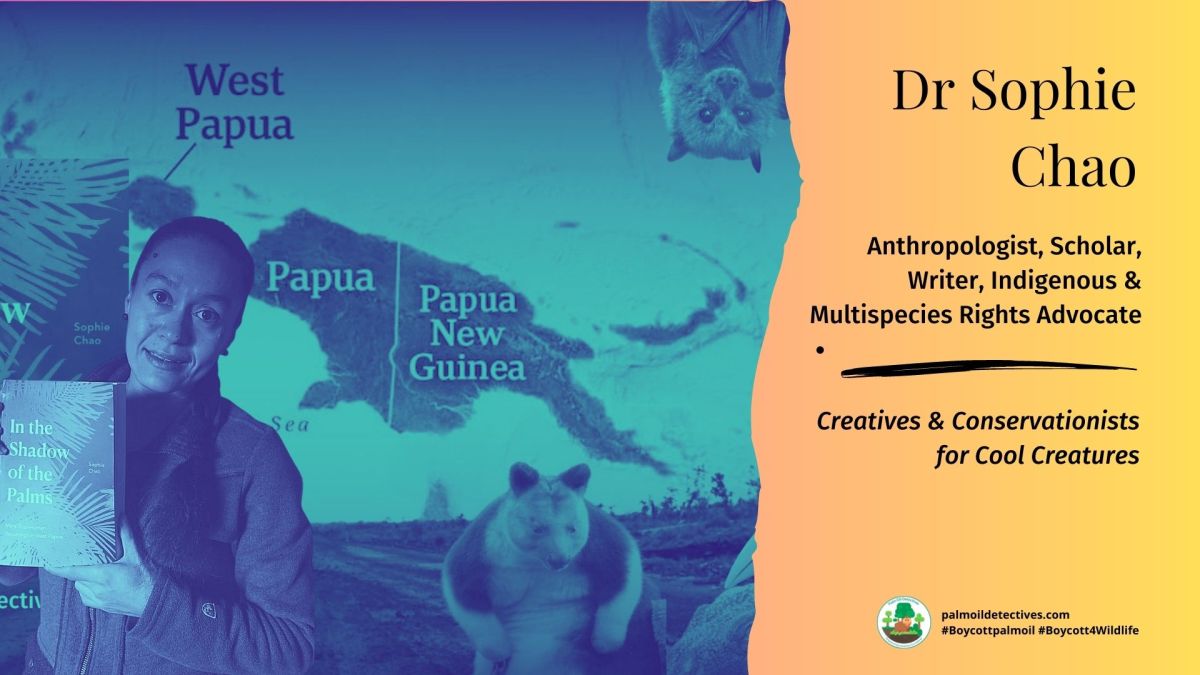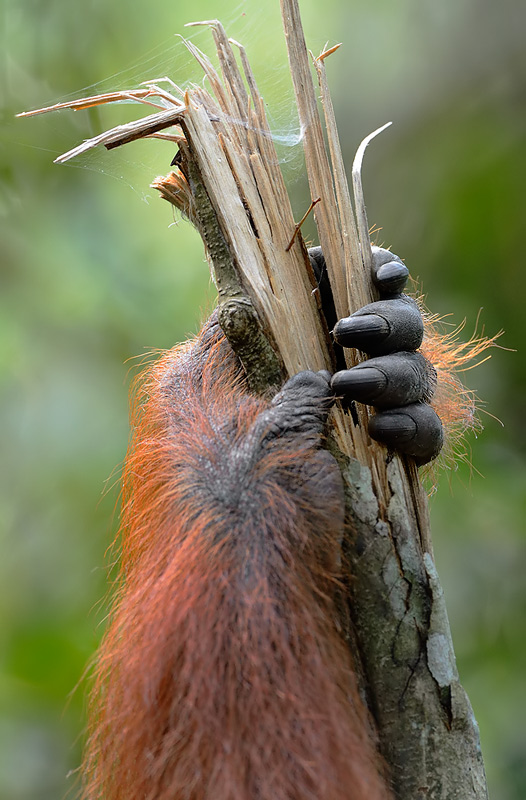Tiger Panthera tigris
Tiger Panthera tigris
Endangered
Population: Around 3,900
Extant (resident): India, Bangladesh, Bhutan, Nepal, Myanmar, Malaysia, Indonesia, Thailand, China, Russia
Tigers, primarily native to Asia’s tropical forests, have seen their habitats shrink dramatically over time. Notably, the Amur Tiger endures in Russia, and there have been sightings of these majestic creatures as high as 4,500 m in Bhutan. Tragically, fewer than 400 tigers remain in Indonesia, clinging to life in Sumatra’s dwindling forests. This decline is attributed to both rampant poaching and severe deforestation, especially for palm oil and pulp industries. As Asia continues to develop rapidly, the vast territories tigers need are shrinking, replaced by agriculture, commercial logging, and settlements. Moreover, tigers‘ prey faces threats from hunting and competition with domestic livestock. It’s time to act and use our wallet as a weapon: be #vegan #Boycottpalmoil #Boycott4Wildlife.
For 🇮🇩 Indonesia’s #tigers 🐅 fewer than 400 hang on to survival in rainforests of #Sumatra. Endangered by #poaching and #deforestation for #palmoil and timber. Boycott the brands sending them #extinct 😡🧐#Boycottpalmoil #Boycott4Wildlife @palmoildetect https://wp.me/pcFhgU-fT
Share to BlueSkyShare to TwitterThe mighty and majestic #tiger 🐅🐯 of #Sumatra are on the brink of #extinction from #palmoil and #mining #deforestation. Less than 400 remain alive! 😭Use your wallet as a weapon and fight for them #Boycottpalmoil #Boycott4Wildlife 🌴🔥🚫 @palmoildetect https://wp.me/pcFhgU-fT
Share to BlueSkyShare to TwitterTigers, the largest members of the cat family, are renowned for their majestic presence and striking orange coats with black stripes. They possess extraordinary strength and agility and maintain the balance of ecosystems as apex predators. With fewer than 4,500 remaining in the wild, tigers are classified as Endangered, facing grave threats from habitat destruction for palm oil, poaching, and human-wildlife conflict.
Their survival depends on urgent protection and animal advocacy. Protecting tigers ensures the preservation of the rich biodiversity within their habitats. Support their future by joining the #BoycottPalmOil and #Boycott4Wildlife movements.
Habitat
Tigers inhabit a wide variety of environments, including tropical rainforests, mangrove swamps, grasslands, and boreal forests. They require vast territories to hunt and breed, with males typically occupying larger ranges than females. Tigers are currently found in fragmented populations across Asia, with key strongholds in India, Sumatra, and Siberia.
These habitats are increasingly under threat due to deforestation, agricultural expansion, and infrastructure development, which have reduced their historical range by over 93%.
Diet
As apex predators, tigers primarily hunt large prey, such as sambar deer, wild boar, and buffalo. They are known for their stealth and strength, often ambushing their prey with a single powerful strike. Unlike other big cats, tigers can swim to catch prey, a unique skill that sets them apart.
In areas with reduced prey availability, tigers may hunt smaller mammals or livestock, which can lead to conflicts with humans.
Appearance and Behaviour
• Swimming Ability: Tigers are strong swimmers, often crossing rivers and lakes to hunt or cool off—an unusual trait among big cats.
• Individualised Stripes: Their stripes serve as camouflage and are unique to each tiger, making them distinguishable even in dense foliage.
• Vocal Range: Tigers have a wide vocal range, including growls, roars, and chuffs, used to communicate with other tigers.
• Apex Predator Status: As the top predator in their ecosystems, tigers help maintain balance by regulating prey populations.
Tigers are uniquely recognisable by their bold stripe patterns, which are as individual as fingerprints. Their muscular builds, powerful limbs, and retractable claws make them adept hunters and swimmers, setting them apart from most other big cats. Unlike lions or cheetahs, tigers are solitary by nature and fiercely territorial.
Their physical features include a robust skull, long canine teeth, and strong jaw muscles designed for gripping and tearing prey. Tigers are also among the few big cats that enjoy water, often cooling off in rivers and lakes. Their signature behaviours include scent marking, vocalisations such as roars and chuffs, and stealthy stalking of prey.
Reproduction & Mating
Tigers reach sexual maturity at around 3-4 years of age. Breeding typically occurs year-round, but more frequently during the winter months. After a gestation period of approximately 100 days, females give birth to 2-4 cubs in secluded dens.
Cubs are dependent on their mothers for the first 18 months, learning essential survival skills like hunting. Only about half of all cubs survive to adulthood, as they face threats from predators, disease, and starvation.









Threats
Habitat Destruction: Deforestation for palm oil agriculture, timber logging, and development fragments their habitats, isolating populations.
• Poaching: Tigers are hunted for their skins, bones, and other body parts, often sold illegally for traditional medicine or as luxury items. Organisations like EIA directly combat this illegal trade.
• Prey Depletion: Overhunting of herbivores reduces food availability, impacting tiger populations.
• Human-Wildlife Conflict: As human settlements expand, conflicts arise, often leading to retaliation killings of tigers.
The last of Indonesia’s tigers—now fewer than 400—are holding on for survival in the remaining patches of forests on the island of Sumatra. While poaching claims most tigers each year, deforestation remains a serious threat.
Sumatra has lost more than half of its forests in the last 40 years, primarily due to conversion for palm oil and pulp plantations. Poaching for illegal trade in high-value Tiger products including skins, bones, meat and tonics is a primary threat to Tigers.
Asia is a densely populated and rapidly developing region, bringing huge pressures to bear on the large wild areas required for viable Tiger populations. Conversion of forest land to agriculture and silviculture, commercial logging, and human settlement are the main drivers of Tiger habitat loss. With their substantial dietary requirements,
Tigers require a healthy large ungulate prey base, but these species are also under heavy human subsistence hunting pressure and competition from domestic livestock.
Tigers are classified as Endangered on the IUCN Red List, with fewer than 4,500 individuals remaining in the wild. While conservation efforts have stabilised some populations, habitat loss and poaching continue to pose significant challenges. Collaborative international efforts are crucial to ensuring their survival.
The last of Indonesia’s tigers—now fewer than 400—are holding on for survival in the remaining patches of forests on the island of Sumatra. While poaching claims most tigers each year, deforestation remains a serious threat.
IUCN RED LIST

Support Tiger Protection
• Boycotting palm oil and other products linked to deforestation.
• Contributing to organisations that protect tiger habitats and combat illegal poaching and animal trafficking like Traffic and EIA.
• Raise awareness about the critical importance of tigers in maintaining healthy ecosystems by joining the #BoycottPalmOil and #Boycott4Wildlife movement.
Further Information

Britannica. (2024). Tiger. Retrieved from https://www.britannica.com/animal/tiger
Goodrich, J., Wibisono, H., Miquelle, D., Lynam, A.J., Sanderson, E., Chapman, S., Gray, T.N.E., Chanchani, P. & Harihar, A. 2022. Panthera tigris. The IUCN Red List of Threatened Species 2022: e.T15955A214862019. https://dx.doi.org/10.2305/IUCN.UK.2022-1.RLTS.T15955A214862019.en. Accessed on 20 December 2024.
Panthera. (2024). Tiger. Retrieved from https://panthera.org/cat/tiger
Dalida Innes Wildlife Photography

How can I help the #Boycott4Wildlife?
Take Action in Five Ways
1. Join the #Boycott4Wildlife on social media and subscribe to stay in the loop: Share posts from this website to your own network on Twitter, Mastadon, Instagram, Facebook and Youtube using the hashtags #Boycottpalmoil #Boycott4Wildlife.
Enter your email address
Sign Up
Join 3,528 other subscribers2. Contribute stories: Academics, conservationists, scientists, indigenous rights advocates and animal rights advocates working to expose the corruption of the palm oil industry or to save animals can contribute stories to the website.

Wildlife Artist Juanchi Pérez

Mel Lumby: Dedicated Devotee to Borneo’s Living Beings

Anthropologist and Author Dr Sophie Chao

Health Physician Dr Evan Allen

The World’s Most Loved Cup: A Social, Ethical & Environmental History of Coffee by Aviary Doert

How do we stop the world’s ecosystems from going into a death spiral? A #SteadyState Economy
3. Supermarket sleuthing: Next time you’re in the supermarket, take photos of products containing palm oil. Share these to social media along with the hashtags to call out the greenwashing and ecocide of the brands who use palm oil. You can also take photos of palm oil free products and congratulate brands when they go palm oil free.
https://twitter.com/CuriousApe4/status/1526136783557529600?s=20
https://twitter.com/PhillDixon1/status/1749010345555788144?s=20
https://twitter.com/mugabe139/status/1678027567977078784?s=20
4. Take to the streets: Get in touch with Palm Oil Detectives to find out more.
5. Donate: Make a one-off or monthly donation to Palm Oil Detectives as a way of saying thank you and to help pay for ongoing running costs of the website and social media campaigns. Donate here
Pledge your support#bigCat #Borneo #Boycott4wildlife #BoycottPalmOil #carnivores #deforestation #EndangeredSpecies #extinct #extinction #feline #Malaysia #mining #palmoil #poaching #predator #predators #SouthEastAsia #Sumatra #tiger #TigerPantheraTigris #tigers #vegan #wildcat
Eyewitness by Craig Jones: A mother and baby orangutan are rescued from an RSPO palm oil plantation in Sumatra
Craig Jones: Eyewitness
Wildlife Photographer and Conservationist
Bio: Craig Jones
One of Britain’s finest wildlife photographers, Craig Jones is also one of the most humble and down-to-earth guys you will ever meet. His photography and stories capture the lives of endangered rainforest animals that we hold so dearly to our hearts: Sumatran orangutans, Sumatran tigers, Sumatran elephants, Siamangs and more. His work has featured in BBC News, BBC Wildlife Magazine and National Geographic magazine. He has also appeared for Nat Geo WILD discussing Sumatra as part of the “Paradise Islands & Photo Ark” Nat Geo series. He has spoken at the UK Green Party Conference about the disastrous effects of palm oil in South East Asia, that he seen with his own eyes.
In this story, Craig uses his own words to bear witness to the awesome love and intelligence of orangutans, and also shares stories of the immense suffering of orangutans and other species within RSPO member palm oil plantations. Craig is an absolute inspiration to photographers, animal lovers and conservationists. It is an honour to showcase his work and stories on Palm Oil Detectives.
His work appears in:



My name is Craig Jones, I’m a #wildlife photographer. Here is my eyewitness account of rescuing an #orangutan mother and baby from an #RSPO “sustainable” #palmoil plantation in #Sumatra. We #BoycottPalmOil #Boycott4Wildlife 🌴🔥🛢️⛔ @palmoildetect.bsky.social https://wp.me/pcFhgU-1wJ
Share to BlueSky“The most beautiful rainforest in the world is turned into a souless landscape of palm oil within weeks, with brutal efficiency. Anything in its way gets crushed, killed and discarded.” #Wildlife #photographer Craig Jones @CraigJones17 #Boycott4Wildlife
“That scream I can still hear now, the tone went through me, the pitch could have broken a glass, it was so high and shocking to hear.“ @CraigJones17 recalls rescuing a mum and baby #orangutan from an @RSPOtweets #palmoil plantation
#Wildlife #photographer Craig Jones @CraigJones17 uses his heart and camera to capture spectacular animals of Asia even in settings of absolute cruelty and #palmoil #deforestation he tells his story! #Boycott4Wildlife #Boycottpalmoil
“Sustainable palm oil is a con. #Palmoil is all about #wealth and it’s killing us and the planet. So mother nature will have the last laugh. It’s all corruption. #Boycottpalmoil #Boycott4Wildlife” #Wildlife photographer @CraigJones17
“I kept hearing from locals that the government fails to protect national parks and #endangered species. The same government hands out #palmoil licences letting these companies play god” #Boycottpalmoil #Boycott4Wildlife @CraigJones17
“Those with a vested interest in sustainable #palmoil are linked in some way. How can anyone say sustainable is OK when it is grow in the ashes of the dead wildlife and burnt forests?” #Boycottpalmoil #Boycott4Wildlife” #Wildlife photographer @CraigJones17
A mother and baby are rescued from an RSPO certified palm oil plantation
From the moment we received the rescue call, the days plans changed instantly. I really didn’t know what was waiting for me, as we drove north to the providence of Ache. All I knew was that a mother and her baby were trapped, and we were heading in that direction as fast as will could. When we arrived all I saw was mile upon mile of this horrific landscape.
When we arrived all I saw was mile upon mile of this horrific landscape…
“Walking through a tattered landscape of barren red earth and alien palm oil trees, where once one of the finest rain forests in the world stood, is just impossible for me to describe.
“They take the best rain forest in the world and change it into a souless landscape of palm oil within a matter of weeks, with brutal efficiency. Anything in its way gets crushed, killed and discarded.”
Spotlight Sumatra – The Final Chapter by Craig Jones





We started desperately searching for the mother and her baby orangutan and eventually we found them. Once we managed to tranquilise the mother, her basic instinct was to protect her child, fueling her to just hang on and not give into the tranquilizer.
It was heartbreaking. I was praying she’d just let go so they could receive help. She had a strong will and this went on for around fifteen minutes. By this time it was almost too hard to watch, the team was moving below her and watching them both, just to make sure the net was in the right place, as she could fall at any time.

After a while, you could see she was becoming slightly clumsy, missing branches that she was trying to hold onto. Then she went to just one arm, and then she just fell into the waiting net below.
The team scrambled up the steep hillside. They try to take the baby away from the unconscious mother at the first available chance. I managed to capture that incredibly moving moment with this image, as the mother is carried off in the net she fell into, while one of the team give the signal to where they have to go.
As I took images of the mother, the baby was being held by one of the team, as it’s safer for the baby this way. While mother and baby were apart, the baby struggled, trying to bite and screaming.
“That scream I can still hear now, the tone went through me, the pitch could have broken a glass, it was so high and shocking to hear.“
Craig Jones

We had about 40 minutes before the sedative wore off. A good chunk of that time the orangutan had fought, hanging in the tree. Time was tight. The vet took blood, checked her teeth, bum area and general health. It was so sad to see but I knew these guys were helping her.
 A mother and baby orangutan are rescued from an RSPO member palm oil plantation. Craig Jones Wildlife Photography
A mother and baby orangutan are rescued from an RSPO member palm oil plantation. Craig Jones Wildlife Photography I carried on taking images so that I could capture this story no matter what.
The mother looking straight at me with an indescribable emotional stare, and in the background the little baby was screaming.
Craig Jones
 An RSPO palm oil plantation where an orangutan mother and baby were found struggling to stay alive in Sumatra. By Craig Jones Wildlife Photography
An RSPO palm oil plantation where an orangutan mother and baby were found struggling to stay alive in Sumatra. By Craig Jones Wildlife Photography The mother was slightly underweight but she was fine otherwise. The vet gave her the antidote which brings the Orangutan around by counter-acting the tranquilizer. At that point fresh leaves were put in the cage we’d brought for her. She was placed inside the cage and the baby was reunited with his mother. We loaded the mother and baby into the back of our vehicle then drove to the release site which is part of the national park. After this we released them and within a few minutes they had vanished into the dense forest.
 Mother and baby Sumatran orangutans are rescued from an RSPO member palm oil plantation. Craig Jones Wildlife Photography
Mother and baby Sumatran orangutans are rescued from an RSPO member palm oil plantation. Craig Jones Wildlife Photography  Orangutan baby named Craig, rescued from an RSPO certified palm oil plantation in Sumatra. By Craig Jones Wildlife Photography
Orangutan baby named Craig, rescued from an RSPO certified palm oil plantation in Sumatra. By Craig Jones Wildlife Photography“The team named the baby ‘Craig’ after me, which was a great honour and very touching.
“I hope he keeps that fight in his belly that he displayed when he was separated from his mother as this will stand him in good stead for the uncertain future that awaits these Sumatran Orangutans.”craig jones
Orangutans are us and we are them in so many ways…
Palm oil companies play god and play with fire in Sumatra…

 Rainforest is quickly changed to dead land throughout the world by palm oil.
Rainforest is quickly changed to dead land throughout the world by palm oil.“One of the main things I kept hearing from locals was that the government fails to protect national parks, areas that contain so many endangered flagship species of wildlife. The same government that hands out licensees to palm oil companies letting them play god with some of the richest forests on earth.”
Craig jones
Sustainable palm oil is a con…
“@RSPOtweets #sustainable #palmoil is a con. How can anyone say sustainable is OK when it’s grown in the ashes of dead #wildlife #ecocide #deforestation?” @craigjones17 #Boycottpalmoil #Boycott4Wildlife
“Sustainable palm oil is a con. Palm oil is all about wealth and it’s killing us and the planet. So mother nature will have the last laugh. It’s all corruption. Those with a vested interest in this sustainable nonsense are linked in someway you mark my words because how could anyone say sustainable is OK when it’s grow in the ashes of the dead wildlife and burnt forests. This saddens me”. ~ Craig Jones
If consumers at the supermarket were able to see what their purchase destroyed in its production then there might be more change. Cheap, calorific foods are killing the planet and us in the process. Companies need to give back to nature not take more. @BorisJohnson @PalmOilDetect pic.twitter.com/O2RTh9a2YN
— Craig Jones (@CraigJones17) July 4, 2021
I have loved these enduring animals since childhood and now as an adult helping them is a blessing for me…
I witnessed so much in Sumatra, it has been an emotional roller coaster. I feel there is so much we still don’t know about these great apes. For as long as I walk this earth I will do my best to help them, alongside every other creature we share this planet with, by using my camera and my own voice to help them. Without direct intervention in the national parks the Orangutans along with other forest-dependant wildlife- like the Sumatran Tigers and Elephants will become progressively scarcer until their populations are no longer viable.
Their peaceful mannerisms and intelligence is just remarkable…















Photography: Craig Jones
Words: Craig Jones
Join the #Boycott4Wildlife on supermarket brands causing palm oil deforestation
Find out more#ArtistProfile #Artivism #Boycott4wildlife #BoycottPalmOil #conservation #CraigJonesWildlifePhotography #CreativesForCoolCreatures #deforestation #ecocide #endangered #orangutan #palmoil #Photographer #photography #Primate #RSPO #Sumatra #SumatranOrangutanPongoAbelii #sustainable #wealth #wildlife #wildlifeActivism #wildlifePhotography














